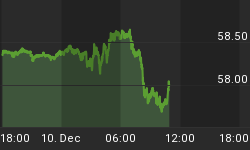As we've discussed recently, persistent deflationary forces do not augur for a repeat of Japan circa 1990s or the US in the 1930s. Instead, because of the inability of government's to finance their current and future debt burden (there is a dearth of domestic savings and global capital), deflationary forces will ultimately lead to severe inflation or hyperinflation. In today's missive, we explain how this will happen but in various stages.
In the first stage, the economy enters a recession after a large credit bubble. The recession and end of the credit bubble lead to deflation. As a result, the US Dollar and US Treasuries outperform. Think 2008.
Policy makers (a term for interventionist bureaucrats) then provide stimulus via monetary easing and deficit spending. Gold and gold stocks outperform with silver not far behind. Think late 2008 to early 2009.
The economy gets a bump from the stimulus and economically sensitive markets such as commodities and stocks outperform. Think 2009.
This brings us to where we are now. The market is starting to sense that Europe's debt burden is too high as its economies struggle to recover under the weight of excessive debt. The market is beginning to sense a rising probability of default. Precious metals are soaring against the Euro, the Pound and the Swiss Franc.
Meanwhile, with money moving back into US Treasuries, the US will have the ability to attempt another stimulus and announce further quantitative easing. Europe is currently ahead of the US on its track to currency depreciation, rising inflation expectations and rising CPI/PPI. The US still has time before the market begins to worry about its debt burden.
The next stage is the transition from the initial outbreak of price inflation to severe inflation. Inflation accelerates due to a loss of confidence in governments and currencies. A failed economic recovery leads the market to realize that the debt burden is too large and will ultimately be defaulted upon or inflated away. At this juncture, all commodities begin to perform well again. It may take anywhere from six to 18 months for this stage to be evident.
Finally, inflation is exacerbated as supply shortages emerge. Tight credit restricts new production and consumers begin to hoard. During such a period, precious metals and commodities will continue to perform well but the agriculture sector will be the real leader.
In order for an investor to maximize returns, they must be able to hold their convictions and adapt to the changes in the coming cycle of inflation. Currently, precious metals are obviously far and away the best play. While more and more investors are waking up to gold, they are not embracing it enough. If it is clear that Gold is a safe haven, why are you only devoting 5-10% of your portfolio to it? Moreover, why do you have zero or 5% exposure to gold stocks when their outlook is superior to commodity stocks and emerging market stocks?
Of course market timing is important and we are here to help. Our combination of technical analysis and sentiment tools has allowed us to catch the last two short-term bottoms in the precious metals sector. We also use the same techniques in our Macro newsletter. If you'd like professional help in navigating the coming mania in the gold and silver stocks, then consider a free 14-day trial to our premium service.
Good luck and protect yourself!
















